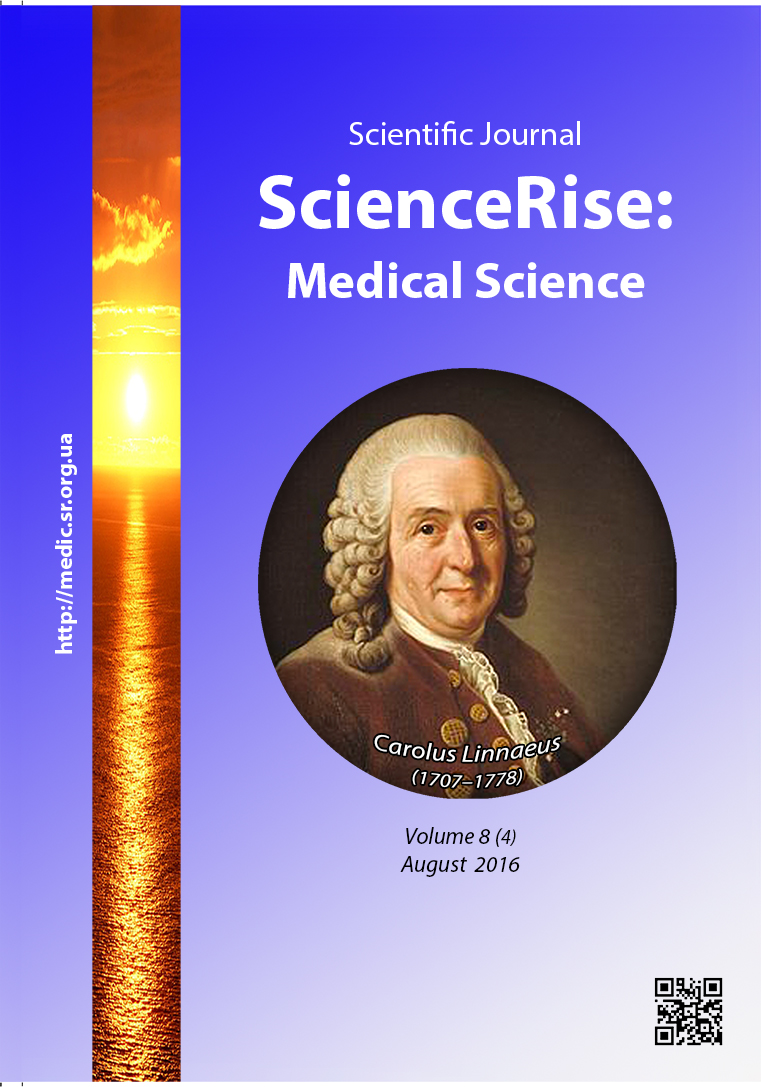Использование устройства для мониторинга температуры тела в клинической практике
DOI:
https://doi.org/10.15587/2519-4798.2016.76204Ключові слова:
устройство мониторинга температуры тела, клиническая практика, контроль воспаления, раневой процессАнотація
В работе анализируются результаты использования устройства для мониторинга температуры тела в клинике. Дано описание конструкции устройства, приведена принципиальная схема. В ходе эксплуатации выявлены возможности и ограничения применения. Проведен анализ результатов использования устройства. Использование разработанного устройства является удобным для пациентов и медицинского персонала и позволяет достоверно осуществлять мониторинг температуры тела
Посилання
- Bogdanova, T. M., Bakutkin, V. V., Bol'shakov, A. A. et. al. (2013). Monitoring kozhnoj temperatury tela cheloveka i ego primenenie v klinicheskoj praktike. Mezhdunarodnyj zhurnal jeksperimental'nogo obrazovanija, 10, 242–245.
- Potehina, Ju. P., Golovanova, M. V. (2010). Prichiny izmenenija lokal'noj temperatury tela. Medicinskij al'manah, 2 (11), 297–298.
- Matsumoto, M., Sugama, J., Okuwa, M., Dai, M., Matsuo, J., Sanada, H. (2013). Non-invasive monitoring of core body temperature rhythms over 72h in 10 bedridden elderly patients with disorders of consciousness in a Japanese hospital: A pilot study. Archives of Gerontology and Geriatrics, 57 (3), 428–432. doi: 10.1016/j.archger.2013.05.009
- Kovalenko, N. O., Sviridenko, L. Ju., Kuvarzin, I. V. (2006). Jelektronnyj termometr dlja primenenija v medicine. Pribory i tehnika jeksperimenta, 6, 1.
- Taylor, N. A. S., Tipton, M. J., Kenny, G. P. (2014). Considerations for the measurement of core, skin and mean body temperatures. Journal of Thermal Biology, 46, 72–101. doi: 10.1016/j.jtherbio.2014.10.006
- Urakova, N. A. (2013). Decrease of the temperature of the head of the fetus during birth as a symptom of Hypoxia. Thermology International, 23 (2), 74–75.
- Stuchebnikov, V. M., Peskov, A. B., Nikolajchuk, O. L., Vas'kov, Ju. N., Bushuev, N. A. (2009). Pat. RF № 2344750. Sposob monitoringa temperatury tela cheloveka i ustrojstvo dlja ego osushhestvlenija. MPK A 61 B 5/00, G 01 K 5/00. zajavl. 13.06.2007; opubl. 27.01.2009, Bjul. № 4.
- Parosochkina, V. V. (2005). Pat. Ukrai'ny № 10838. Prystrij dlja kontrolju zminy temperatury tila. MPK A61B 5/01, H05B 1/02. № u200507508; zajavl. 28.07.2005; opubl. 15.11.2005, Bjul. № 11.
- Sazonov, A. I., Zirjukin, P. A., Zubarev, S. S. (2016). Razrabotka ustrojstva dolgovremennogo monitoringa temperatury tela cheloveka. Sankt-Peterburg: Universitet ITMO, 117.
- Myhajlusov, R. M., Kovalenko, N. O., Romajev, S. M., Svyrydenko, L. Ju. (2016). Pat. Ukrai'ny № 107976U. Prystrij dlja monitoryngu temperatury tila biologichnyh ob’jektiv. MPK A61V5/01, G01K 7/02. № u201600117; zajav. 04.01.2016.; opubl. 24.06.2016, Bjul. № 12.
##submission.downloads##
Опубліковано
Як цитувати
Номер
Розділ
Ліцензія
Авторське право (c) 2016 Ростислав Николаевич Михайлусов

Ця робота ліцензується відповідно до Creative Commons Attribution 4.0 International License.
Наше видання використовує положення про авторські права Creative Commons CC BY для журналів відкритого доступу.
Автори, які публікуються у цьому журналі, погоджуються з наступними умовами:
1. Автори залишають за собою право на авторство своєї роботи та передають журналу право першої публікації цієї роботи на умовах ліцензії Creative Commons CC BY, котра дозволяє іншим особам вільно розповсюджувати опубліковану роботу з обов'язковим посиланням на авторів оригінальної роботи та першу публікацію роботи у цьому журналі.
2. Автори мають право укладати самостійні додаткові угоди щодо неексклюзивного розповсюдження роботи у тому вигляді, в якому вона була опублікована цим журналом (наприклад, розміщувати роботу в електронному сховищі установи або публікувати у складі монографії), за умови збереження посилання на першу публікацію роботи у цьому журналі.










